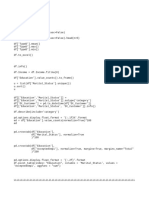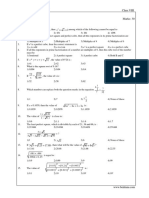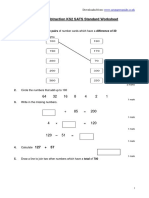0% found this document useful (0 votes)
0 views17 pagesFibonacci search
Fibonacci Search is an efficient search algorithm that utilizes the Fibonacci series to find elements in a sorted array with a time complexity of O(log N). It differs from binary search by dividing the array into unequal parts and involves simple arithmetic operations. The document also briefly covers the Selection Sort algorithm, which sorts a list in ascending order with a time complexity of O(n^2) by repeatedly selecting the minimum element from the unsorted portion.
Uploaded by
Sivam ChinnaCopyright
© © All Rights Reserved
We take content rights seriously. If you suspect this is your content, claim it here.
Available Formats
Download as PPTX, PDF, TXT or read online on Scribd
0% found this document useful (0 votes)
0 views17 pagesFibonacci search
Fibonacci Search is an efficient search algorithm that utilizes the Fibonacci series to find elements in a sorted array with a time complexity of O(log N). It differs from binary search by dividing the array into unequal parts and involves simple arithmetic operations. The document also briefly covers the Selection Sort algorithm, which sorts a list in ascending order with a time complexity of O(n^2) by repeatedly selecting the minimum element from the unsorted portion.
Uploaded by
Sivam ChinnaCopyright
© © All Rights Reserved
We take content rights seriously. If you suspect this is your content, claim it here.
Available Formats
Download as PPTX, PDF, TXT or read online on Scribd
/ 17


























































































